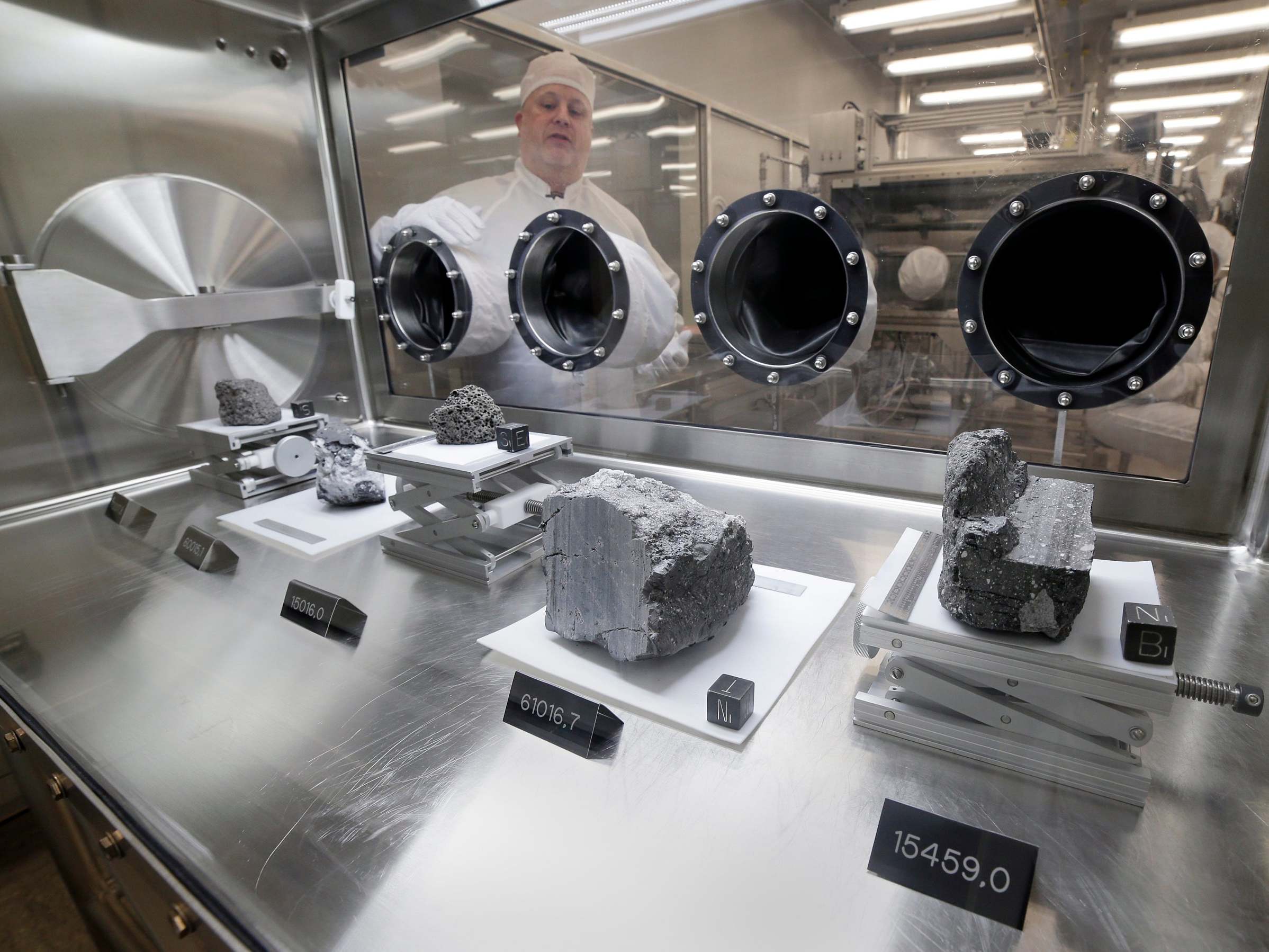Nasa to open moon rock samples sealed after Apollo missions 50 years ago
Nine US research teams will get a chance to examine hundreds of pounds of lunar treasures
Your support helps us to tell the story
From reproductive rights to climate change to Big Tech, The Independent is on the ground when the story is developing. Whether it's investigating the financials of Elon Musk's pro-Trump PAC or producing our latest documentary, 'The A Word', which shines a light on the American women fighting for reproductive rights, we know how important it is to parse out the facts from the messaging.
At such a critical moment in US history, we need reporters on the ground. Your donation allows us to keep sending journalists to speak to both sides of the story.
The Independent is trusted by Americans across the entire political spectrum. And unlike many other quality news outlets, we choose not to lock Americans out of our reporting and analysis with paywalls. We believe quality journalism should be available to everyone, paid for by those who can afford it.
Your support makes all the difference.Moon rock samples collected by Apollo astronauts and subsequently locked away by for decades are to be examined by researchers.
Hundreds of pounds of rocks and dirt taken from the lunar surface are stored at Johnson Space Centre in Houston, and Nasa lab workers are preparing to hand over some of the pristine samples to scientists for study.
Nine US research teams will get a chance to examine the geological treasures – brought back between 1969 and 1972 – over the next year.
Next month marks the 50th anniversary of the first manned moon landing, but sample curator Ryan Zeigler says the timing is accidental.
“It’s sort of a coincidence that we’re opening them in the year of the anniversary,” he said. “But certainly the anniversary increased the awareness and the fact that we’re going back to the moon.”
With the landmark anniversary of Neil Armstrong, Buzz Aldrin and Michael Collins’ feat approaching, the moon is back in vogue at Nasa. After decades of focusing on Mars as a possible manned mission destination, the space agency aims to put astronauts on the lunar surface again by 2024.
Donald Trump, however, prefers the idea of a trip to Mars. “Nasa should NOT be talking about going to the moon – We did that 50 years ago,” he recently tweeted. Yet the consensus is that the moon still offers the chance for crucial scientific research given its relative proximity to home.
Lunar rocks and dirt totalling 842lbs will be carefully removed from the archives and the best samples sent to approved scientists.
The Houston lab’s staff are trying to figure out how best to remove the samples without contaminating or spoiling anything. They are currently practising with mock-up equipment and pretend lunar dirt.
Some of the soil and rock samples have never been exposed to Earth’s atmosphere, having been vacuum-packed on the moon then frozen or stored in gaseous helium on returning to Earth, and left untouched.
Compared with Apollo-era tech, today’s science instruments are much more sensitive, Mr Zeigler noted. “We can do more with a milligram than we could do with a gram back then,” he said.

Of the six manned moon landings, Apollo 11 yielded the fewest lunar samples – only 48lbs. It was the first landing by astronauts and Nasa wanted to minimise risk.
What is left from this mission – about three-quarters after scientific study, public displays and goodwill gifts in 1969 – is kept mostly at room temperature.
The total Apollo inventory now exceeds 100,000 separate samples taken from the moon. Some of the original 2,200 were broken into smaller pieces for study.
Additional reporting by AP
Subscribe to Independent Premium to bookmark this article
Want to bookmark your favourite articles and stories to read or reference later? Start your Independent Premium subscription today.

Join our commenting forum
Join thought-provoking conversations, follow other Independent readers and see their replies
Comments